Explore Financing Options for Custom House Plans Today
Custom builders often face one critical question: are there financing options available for purchasing custom house plans and funding construction seamlessly? Understanding the spectrum of loan products—from land loans to construction-to-permanent mortgages—empowers you to secure the right funds, manage cash flow, and partner with a vetted builder. In this guide, you’ll discover the key loan types, eligibility requirements, step-by-step financing process, pitfalls to avoid, criteria for choosing lenders and builders, regional variations, and practical budgeting tools. By the end, you’ll feel confident exploring options and ready to book a free consultation with Custom Builder Connection to connect with qualified builders who align with your financial parameters.
What Are the Key Types of Financing Options for Custom House Plans?

Custom home financing hinges on selecting the right loan structure to match your project timeline and cash-flow needs. Loan options vary by close structure, collateral, and conversion features, offering flexibility or simplicity based on your priorities.
What Is a Construction Loan and How Does It Work?
A construction loan is a short-term, interest-only loan that disburses funds in stages—known as draws—aligned with construction milestones, supporting controlled cash flow and allowing adjustments as your custom house plans come to life.
Each disbursement requires an inspection to verify progress and protect both lender and homeowner. Understanding draw schedules ensures your builder stays on track and funds are released when you need them most.
Construction Loan Draw Schedules
Construction loans disburse funds in stages, known as draws, which are aligned with construction milestones. This method supports controlled cash flow and allows for adjustments as custom house plans come to life. Each disbursement requires an inspection to verify progress and protect both the lender and homeowner.
How Do Construction-to-Permanent Loans Simplify Financing?
Funds are advanced during construction under an interest-only phase.
Once the build is finished, the loan converts into a standard 15- to 30-year mortgage without a second closing.
Homeowners lock in an interest rate at loan origination, protecting against rate spikes.
This streamlined approach cuts paperwork, shortens timelines, and provides certainty—ideal for borrowers seeking simplicity and cost savings.
What Are Stand-Alone Construction Loans and Their Pros and Cons?
Stand-alone construction loans separate the construction financing and permanent mortgage into two distinct closings, offering flexibility but at the cost of higher fees and interest-rate risk.
Construction Phase – Interest-only draws fund building costs.
Mortgage Phase – After completion, you apply separately for a permanent mortgage.
Pros:
Ability to shop for competitive permanent mortgage rates
Potential to refinance if rates drop
Cons:
Two sets of closing costs
Exposure to rate increases before mortgage approval
Choosing between single-close and two-close structures depends on your risk tolerance and market outlook.
How Can Land Loans and Lot Loans Help Finance Your Custom Home?
Land and lot loans cover the purchase of undeveloped property before construction begins, bridging the gap between land acquisition and building financing.
Land Loan – Financing for raw, unimproved land.
Lot Loan – Financing for serviced or partially improved lots.
Typical requirements include a larger down payment (20–30%) and higher interest rates than standard mortgages. Securing land first clarifies lot feasibility, utility access, and foundation costs—paving the way for a construction loan based on detailed custom house plans.
When Should You Use Home Equity Loans or HELOCs for Custom Builds?
Home equity products leverage existing property value to fund new construction:
Home Equity Loan – Lump-sum, fixed-rate loan secured by your current home’s equity.
HELOC (Home Equity Line of Credit) – Revolving credit line with variable rate.
These options suit owners with significant equity and stable credit who want predictable payments (home equity loan) or draw-as-needed flexibility (HELOC). Using collateral wisely can lower borrowing costs but requires disciplined draw and repayment strategies.
Home Equity Loan Considerations
Home equity loans and HELOCs leverage existing property value to fund new construction. Home equity loans offer a lump-sum, fixed-rate option, while HELOCs provide a revolving credit line with a variable rate. Using collateral wisely can lower borrowing costs but requires disciplined draw and repayment strategies.
What Specialized Loan Programs Are Available for Custom Home Financing?
Beyond conventional options, specialized programs cater to specific borrower profiles:
These programs can bridge unique financing needs, but each has eligibility criteria—working with an experienced lender and vetted builder ensures you match the right program to your custom project.
What Are the Essential Requirements to Qualify for Custom Home Financing?

Securing any custom build loan depends on financial stability, detailed plans, and a credible builder. Lenders assess multiple factors to approve your financing request.
How Does Your Credit Score Affect Custom Home Loan Approval?
Lenders typically require a minimum credit score of 620–680 for construction financing, with scores above 700 unlocking better rates and terms. A higher score demonstrates repayment history and lowers perceived risk, influencing interest rates and approval odds. Improving credit through timely payments, reducing debt balances, and correcting inaccuracies can enhance eligibility and save thousands over your loan term.
Why Are Detailed Custom House Plans Critical for Loan Approval?
Lenders require comprehensive architectural and engineering plans to verify project scope, cost estimates, and completion timelines. Detailed plans illustrate materials, labor budgets, and construction phases—enabling accurate appraisals and draw scheduling. Without precise blueprints, lenders cannot assess loan collateral or disbursement milestones, which stalls approval and complicates fund releases.
How Important Is Builder Approval and Vetting in Financing?
Builder approval is a mandatory lender criterion, focusing on licensing, insurance, financial stability, and track record. A vetted home builder with a history of completing projects on time and within budget reduces construction risk and reassures lenders. Choosing a builder pre-approved by multiple lenders simplifies underwriting and expedites your financing process.
What Down Payment and Financial Health Factors Should You Prepare?
Lenders evaluate your down payment, debt-to-income (DTI) ratio, and reserve requirements:
Down Payment – Often 20–30% for construction loans.
DTI Ratio – Maximum 43–50% including projected mortgage payments.
Cash Reserves – 2–6 months of principal, interest, taxes, and insurance (PITI).
Strong financial reserves and a healthy DTI showcase your capacity to manage unexpected costs and ongoing payments, reinforcing lender confidence.
How Does the Custom Home Financing Process Work Step-by-Step?
Understanding each phase of your loan journey—from pre-approval through permanent mortgage conversion—ensures you meet milestones and avoid delays.
What Is the Role of Pre-Approval in Custom Home Financing?
Pre-approval establishes your borrowing power by verifying income, assets, and credit before selecting plans or builders. Securing pre-approval defines your budget, strengthens negotiation with builders, and prevents surprises during underwriting. It signals to lenders and builders that you’re a qualified buyer ready to proceed.
What Documents Are Needed for a Custom Home Loan Application?
Lenders typically request the following documentation to underwrite construction loans:
Two years of tax returns and W-2s or 1099s
Recent pay stubs and proof of additional income
Bank statements and asset statements
Detailed construction budget derived from custom house plans
Builder contract and proof of builder insurance
Organizing these documents in advance accelerates application review and draw scheduling once construction begins.
How Are Construction Loan Draws Managed During Building?
Draws are installments of your construction loan released after each verified phase—foundation, framing, roofing, and final inspection. An inspector or lender representative confirms progress before releasing funds, safeguarding against overfunding and ensuring quality control. Effective draw management maintains cash flow for your builder while protecting your investment.
What Happens When Your Construction Loan Converts to a Permanent Mortgage?
Final Appraisal – Confirms home value matches loan-to-value ratio.
Loan Conversion – Disburses any remaining funds and locks in your mortgage term.
One Closing (C2P) or Second Closing (stand-alone) – Finalizes permanent financing.
This conversion stabilizes your payments on a long-term amortization schedule, marking the culmination of the construction phase and the start of homeownership.
How Can You Avoid Common Financing Mistakes When Building a Custom Home?

Preventing budget overruns and financial strain requires foresight, contingency planning, and disciplined draw control throughout construction.
What Hidden Costs Should You Anticipate in Custom Home Financing?
Unexpected expenses often arise from permit delays, material price volatility, and site conditions. Homeowners should budget an extra 10–15% of total build costs as a contingency fund. Reserving additional funds for utility hookups, landscaping, and design upgrades prevents draw shortfalls and ensures your custom vision remains on track.
How Can Overextending Your Mortgage Impact Your Financial Stability?
Borrowing beyond your repayment capacity can lead to payment shock, strained household budgets, and limited flexibility for other financial goals. Maintaining a conservative DTI ratio below 45% and avoiding aggressive borrowing safeguards your credit profile and allows room for unexpected expenses or interest rate increases.
What Are Best Practices for Managing Construction Loan Draws and Budgets?
Regular Communication – Schedule weekly check-ins with your builder to review progress.
Documentation – Retain copies of inspections, invoices, and change orders.
Contingency Tracking – Monitor spending against contingency reserves.
These practices foster transparency, reduce delays, and align disbursements with actual costs.
How Do You Choose the Right Lender and Builder for Your Custom Home Financing?
A synergistic lender-builder partnership streamlines approvals, protects your budget, and delivers a seamless build experience.
What Criteria Should You Use to Vet Home Builders for Financing Approval?
Licensing and insurance compliance
Proven experience with similar custom home projects
Established relationships with preferred lenders
Positive client testimonials and on-time delivery record
A builder who understands lender requirements and draws schedules can simplify underwriting and fund management.
How Do You Find Qualified Construction Loan Lenders?
Competitive rates on construction and permanent phases
Single-close options for streamlined closings
Clear draw schedules and transparent fee structures
Expertise in local regulations and appraisal standards
Comparing multiple lender proposals ensures you secure the most favorable terms for your custom build.
How Can Builders Assist with Financing Programs and Loan Options?
Many custom builders partner with preferred lenders to offer tailored financing packages, turnkey pricing, and rate locks. These collaborations can include discounted builder fees, shared inspection services, or bundled closing cost credits—making the financing process more predictable and cost-effective for homeowners.
Why Is Booking a Consultation with a Custom Home Expert Important?
Engaging with Custom Builder Connection for a free consultation connects you with vetted builders who understand diverse loan programs and project scopes. Personalized guidance clarifies financing strategies, aligns builder selection with your budget, and accelerates your path from custom plans to groundbreaking.
What Local and Regional Financing Factors Affect Custom Home Loans?
Custom home finance options and requirements can vary significantly by geography, influenced by local regulations, lender availability, and market conditions.
How Do Financing Options Vary by State or Region?
State regulations dictate licensing, inspection protocols, and permissible loan structures. In some regions, rural development loans or state-sponsored programs may supplement conventional options. Understanding local nuances helps you leverage specialized products and avoid regulatory pitfalls.
Where Can You Find Local Lenders and Builders Familiar with Custom Home Financing?
Regional associations—such as your state’s Home Builders Association—provide directories of approved builders and construction loan lenders. Local credit unions and community banks often offer niche land-loan and construction products tailored to area cost structures and permitting processes.
What Are Current Interest Rate Trends and Market Conditions for Construction Loans?
Construction loan rates typically track short-term benchmarks plus lender margin, averaging 0.25–1.0% above prime. Recent Federal Reserve signals and regional housing demand inform rate forecasts. Monitoring market reports from the Mortgage Bankers Association or NAHB can help you lock in competitive terms when timing aligns with project start dates.
What Tools and Resources Can Help You Plan and Budget for Custom Home Financing?

Effective budgeting and cost visibility streamline financing decisions and builder negotiations, reducing surprises and optimizing loan use.
How Can Budgeting Templates and Cost Breakdown Tools Improve Your Financing Plan?
Budget templates categorize line items—land acquisition, site work, materials, labor, permits—and calculate contingency needs. By mapping expenses against loan draws, you forecast funding gaps and ensure reserves cover unanticipated costs, improving lender confidence and cash-flow management.
What Interactive Calculators Help Estimate Down Payments and Loan Amounts?
Online calculators hosted by lenders or financial planning sites allow you to input projected home value, interest rate, and loan term to estimate down payment requirements and monthly obligations. These tools accelerate scenario comparisons and guide realistic budgeting before formal applications.
Where Can You Access Expert Advice and Case Studies on Custom Home Financing?
Custom Builder Connection’s resource hub offers in-depth case studies—such as The Smith Family’s journey from custom plans to dream home—and expert articles on bridging finance gaps. Real-world examples illustrate loan selection, builder collaboration, and contingency strategies that lead to successful outcomes.
Building a custom home is a multifaceted endeavor, but understanding your financing options transforms uncertainty into empowerment. By aligning loan products with your project scope, meeting lender requirements, managing draws carefully, and partnering with vetted builders, you’ll navigate complexities confidently.
Ready to explore tailored financing and connect with qualified custom home builders? Book your free consultation at Custom Builder Connection and take the first step toward your dream home.


